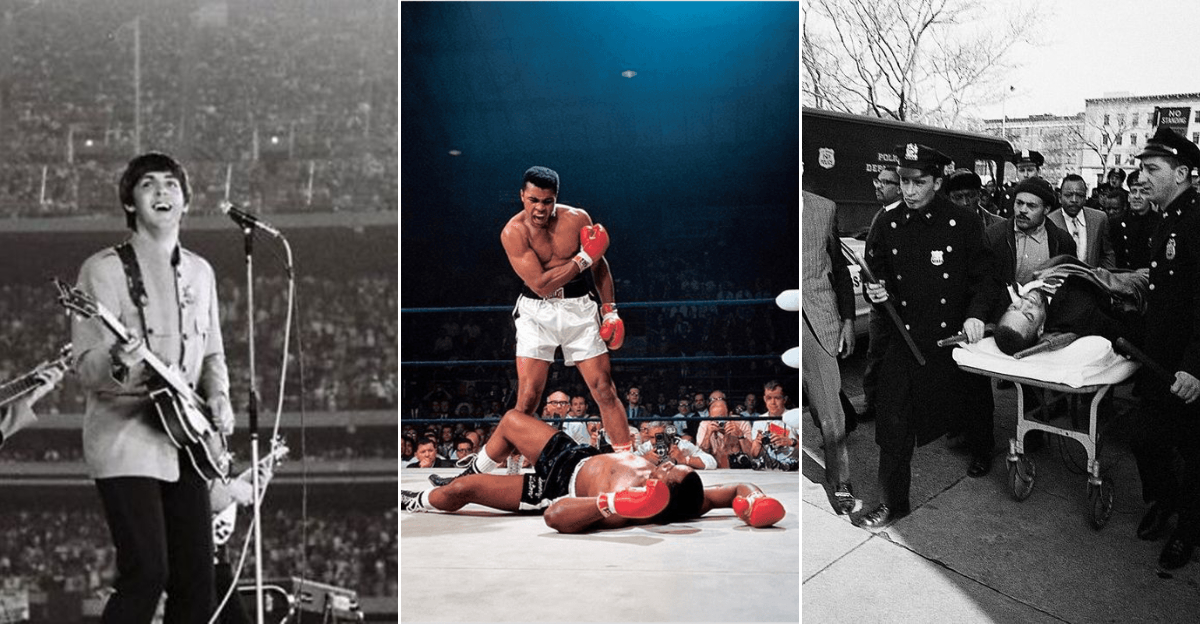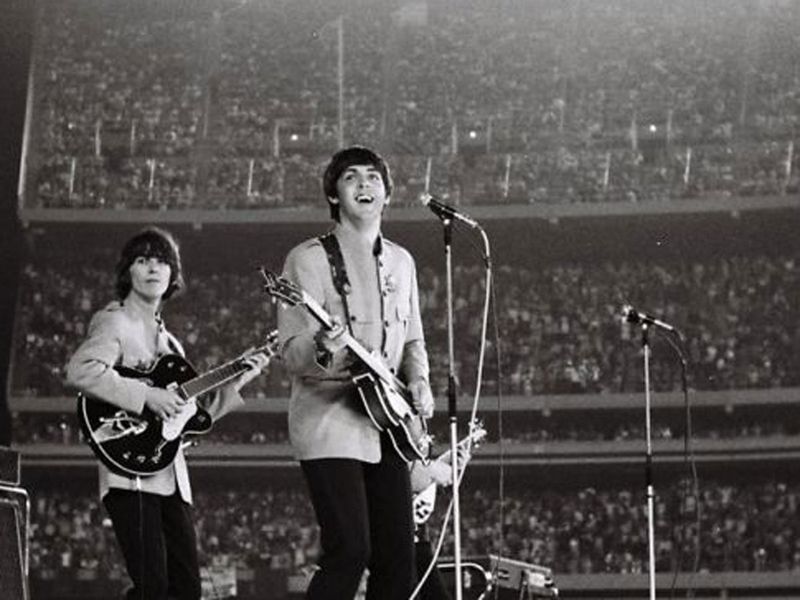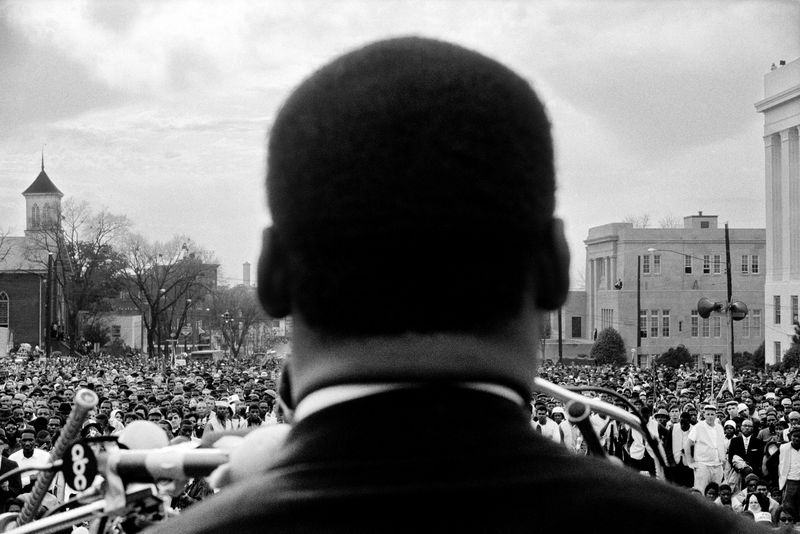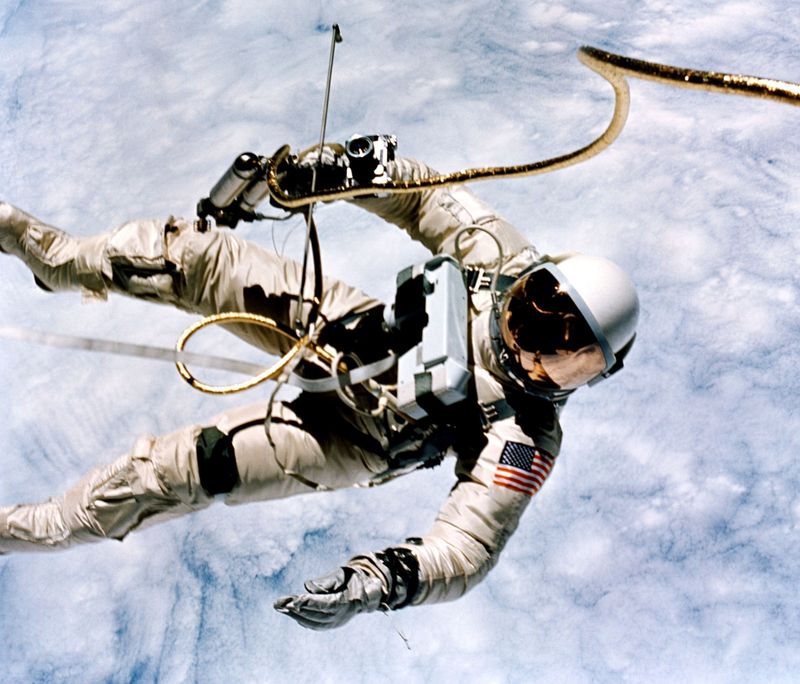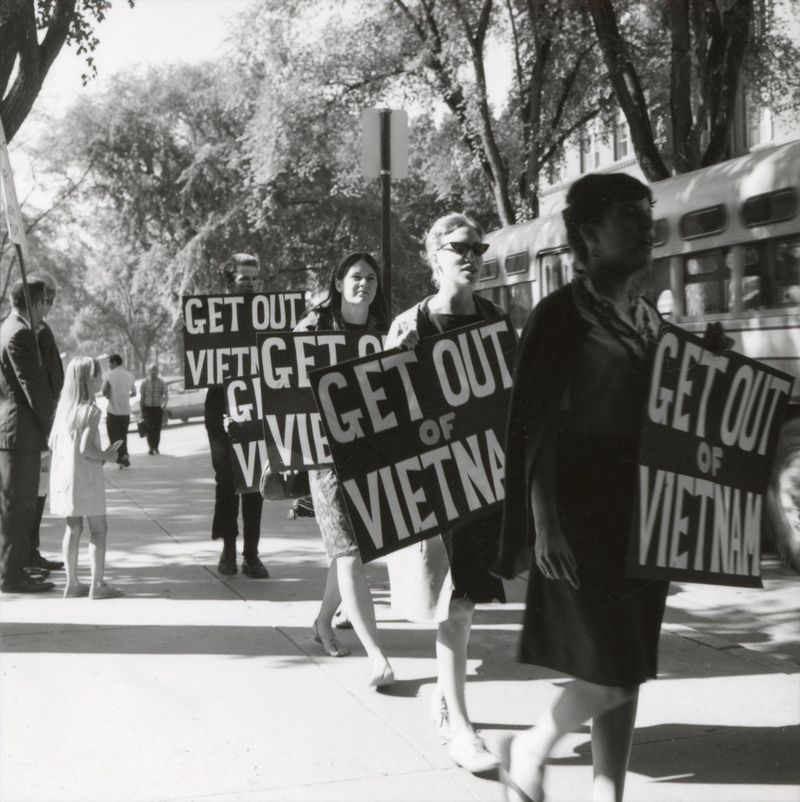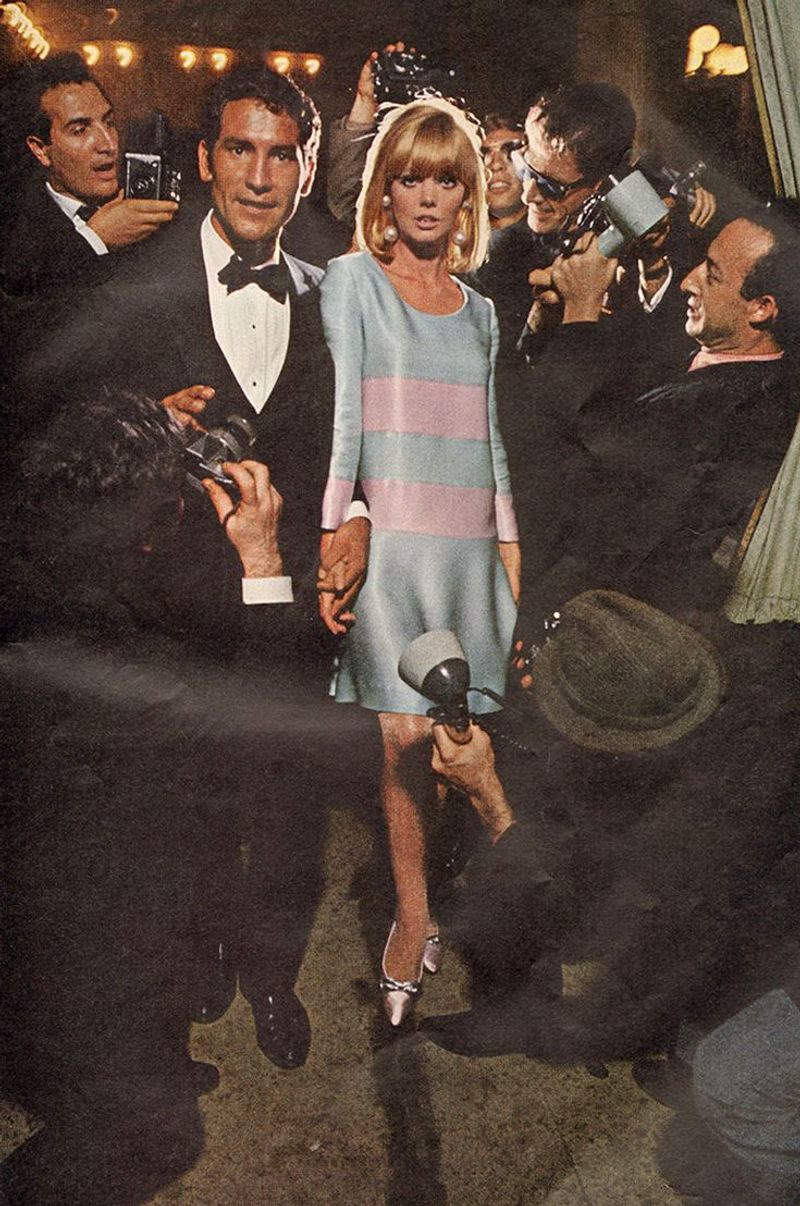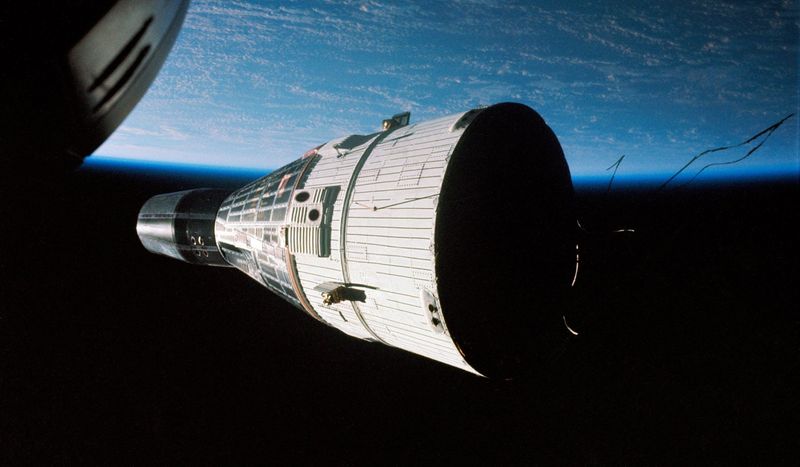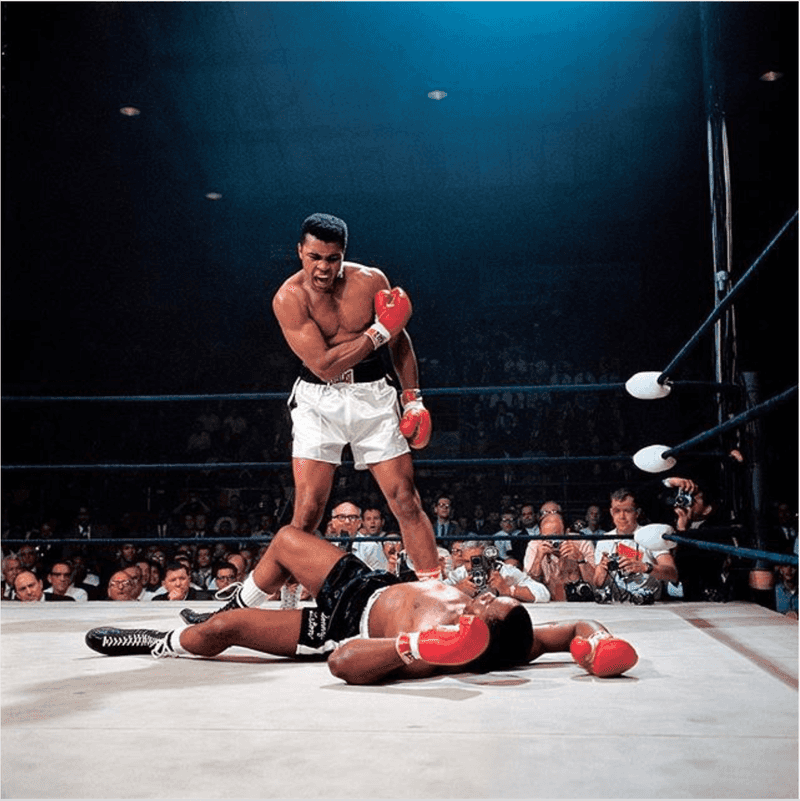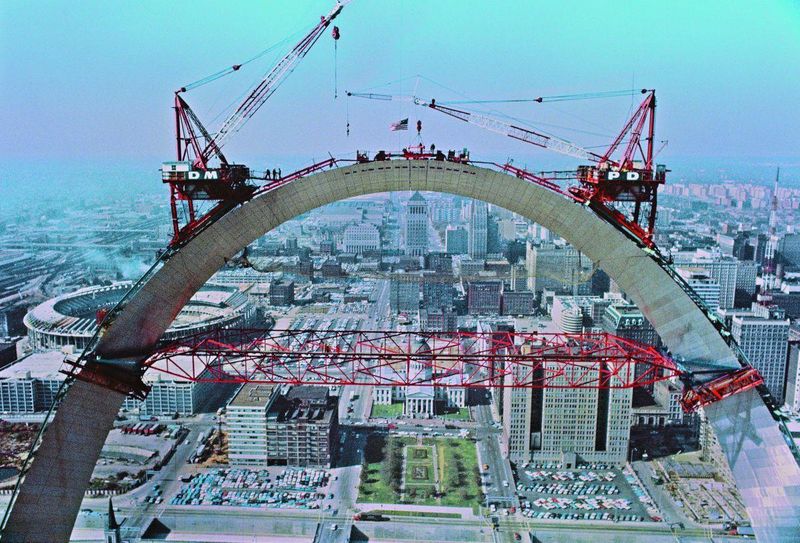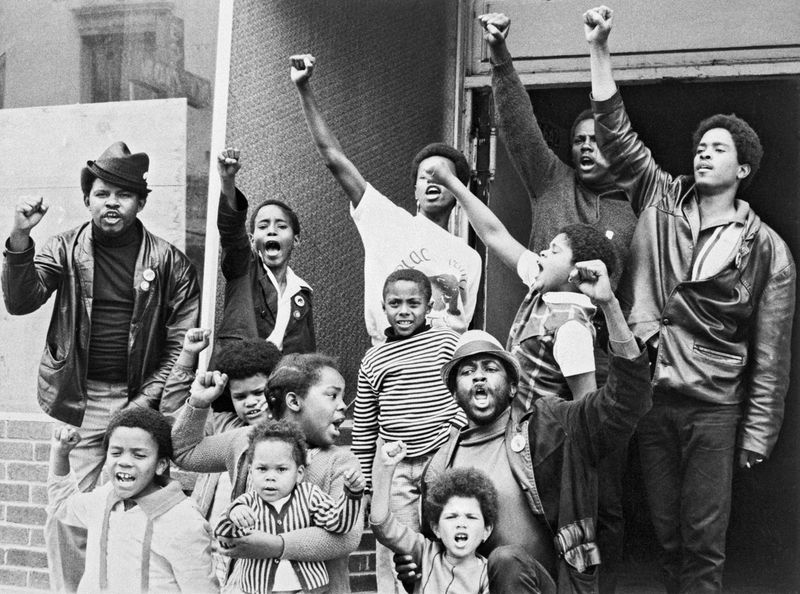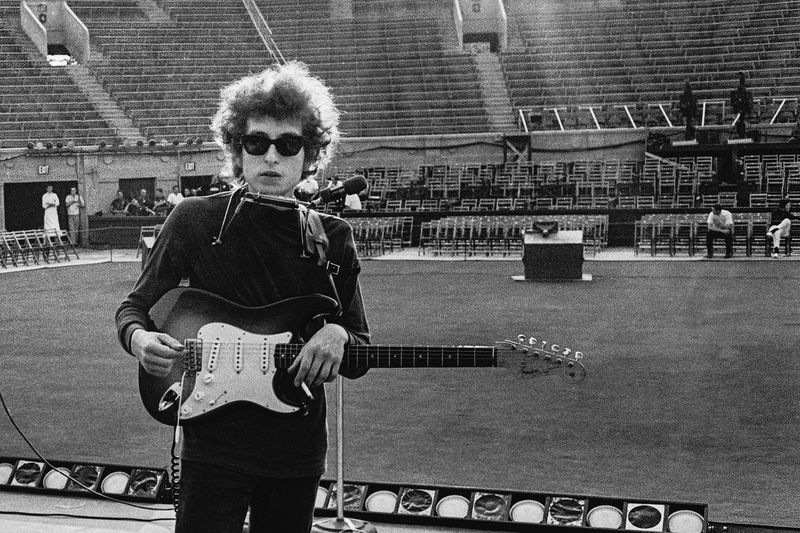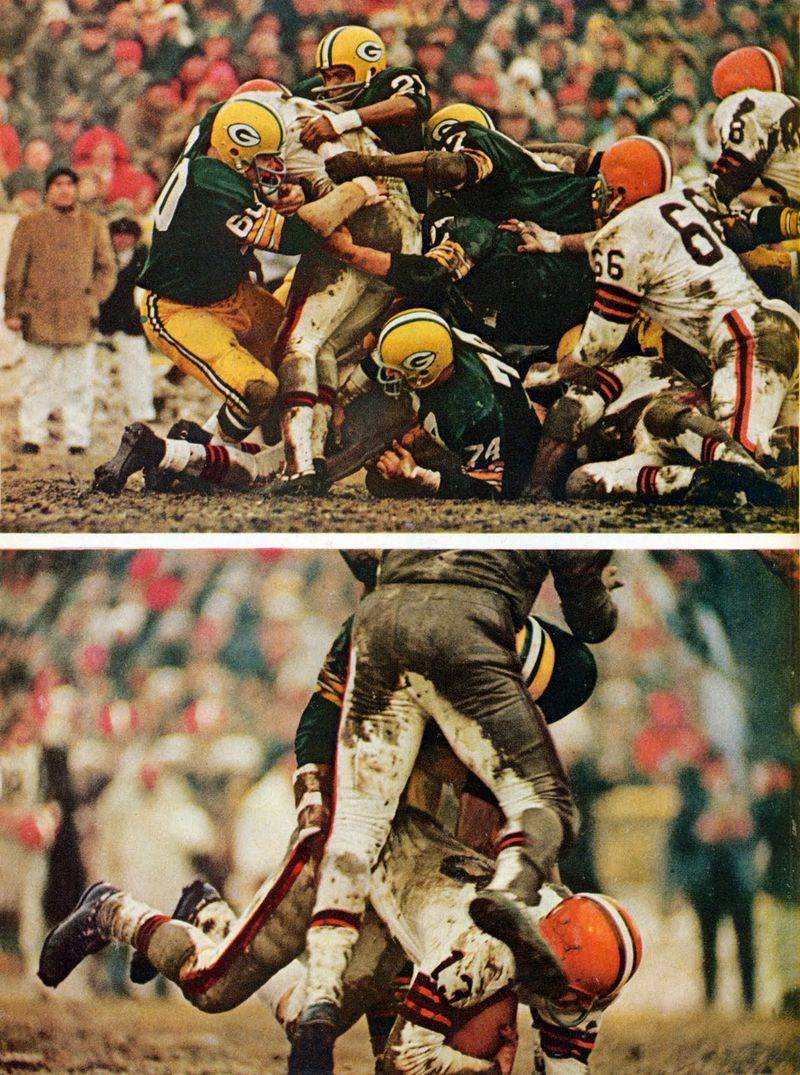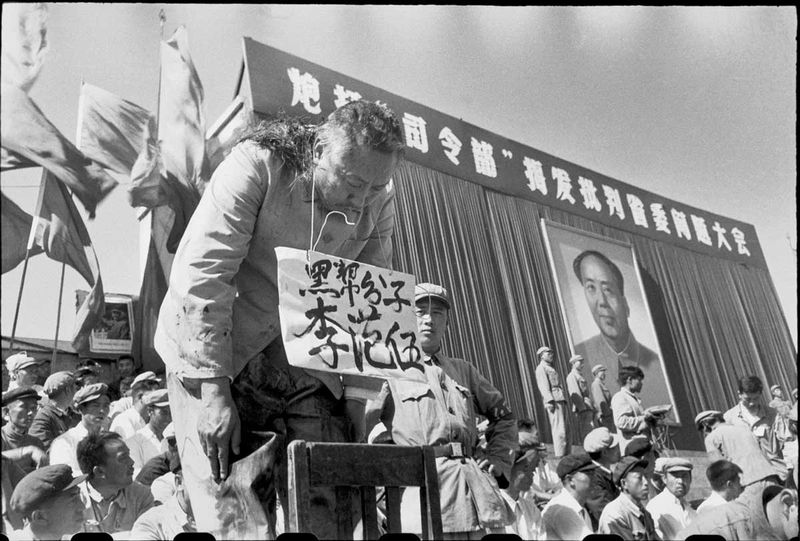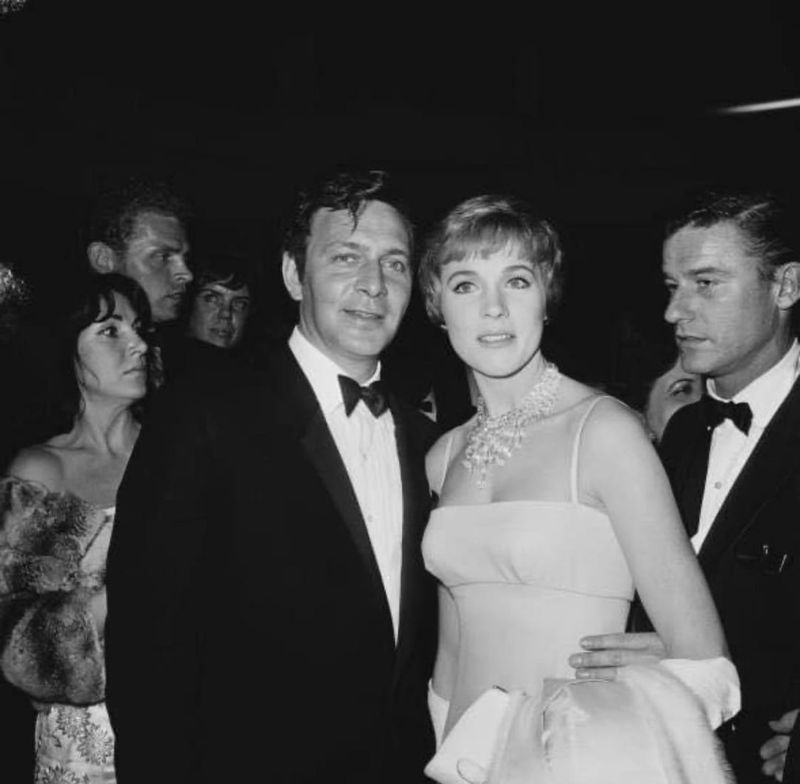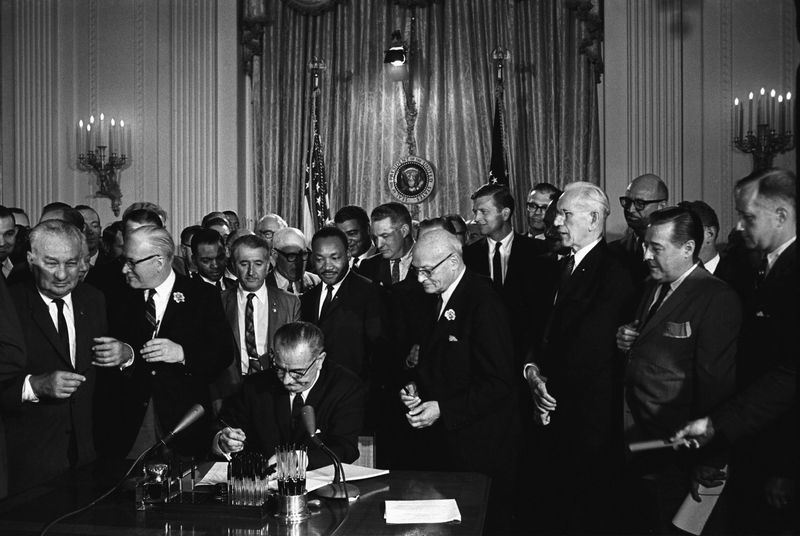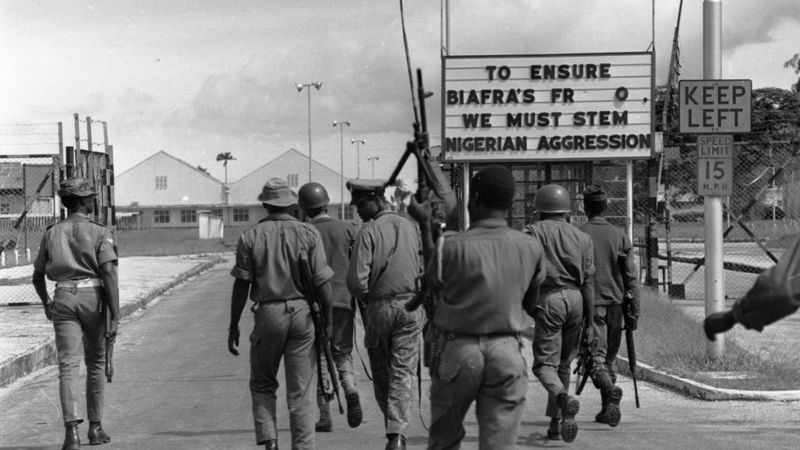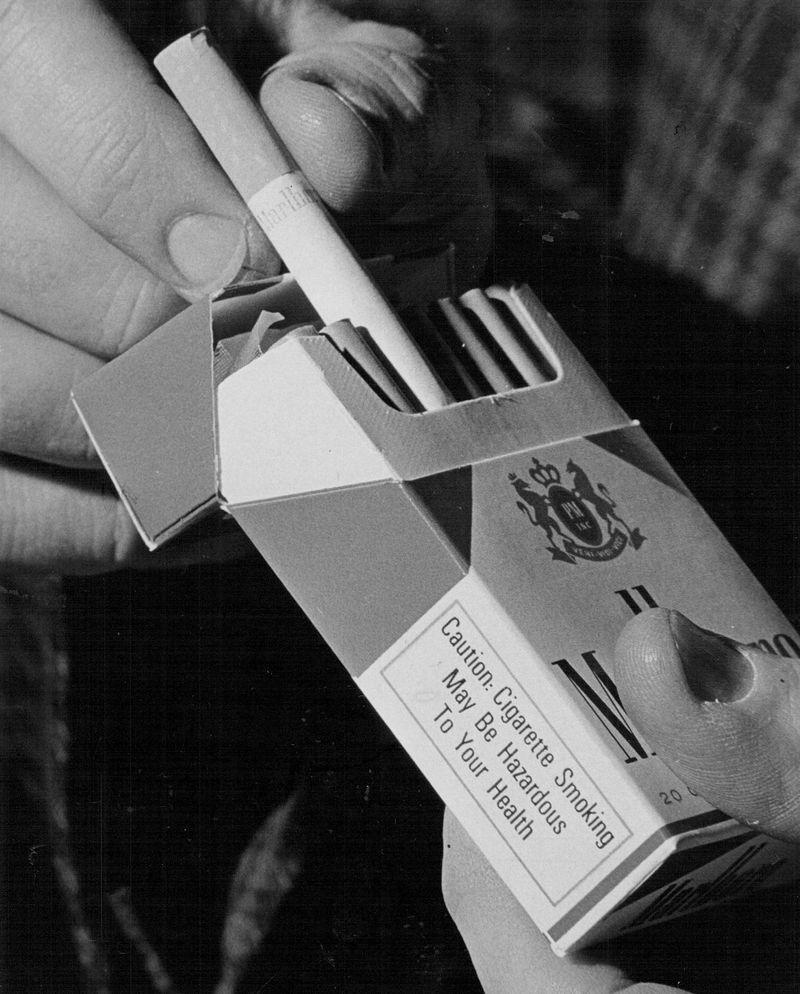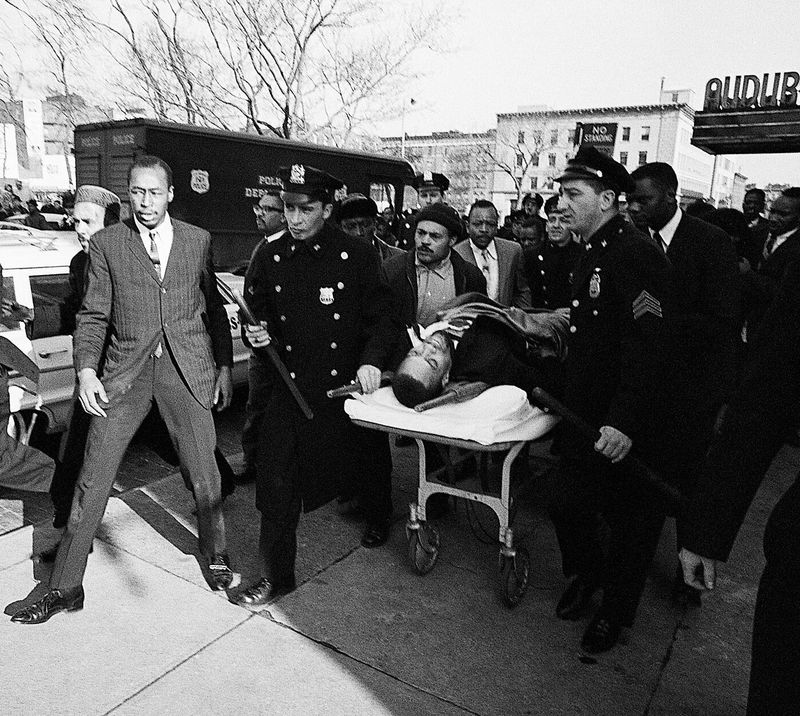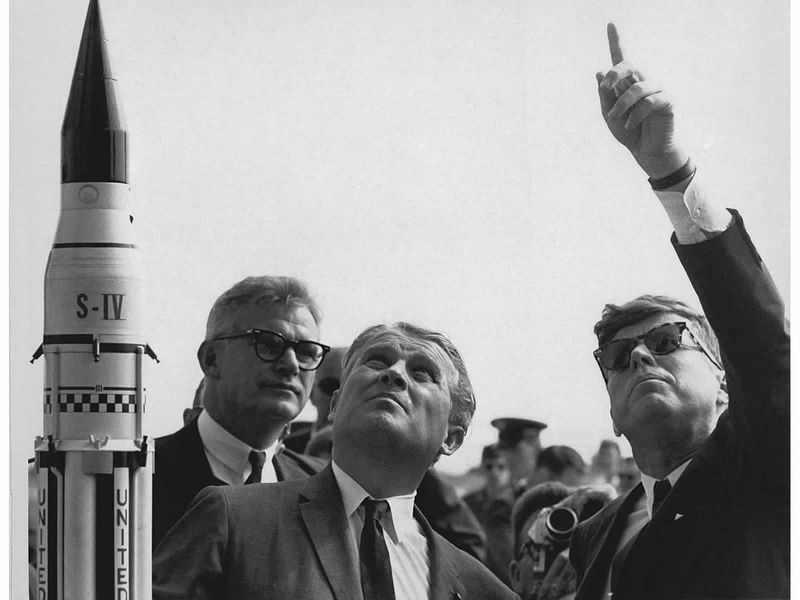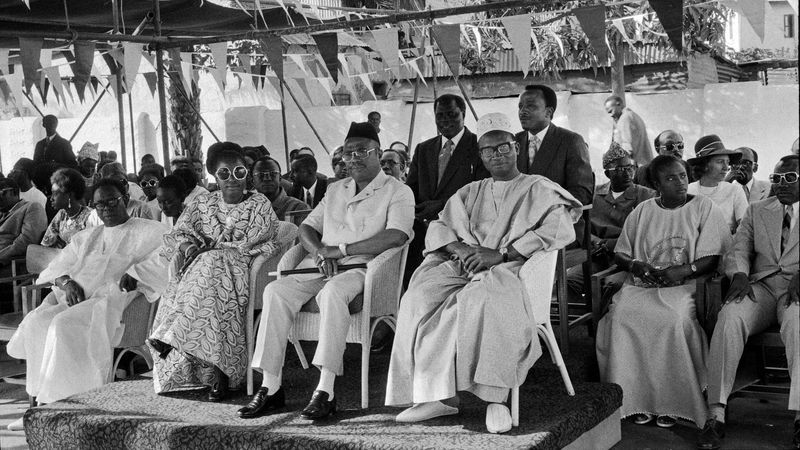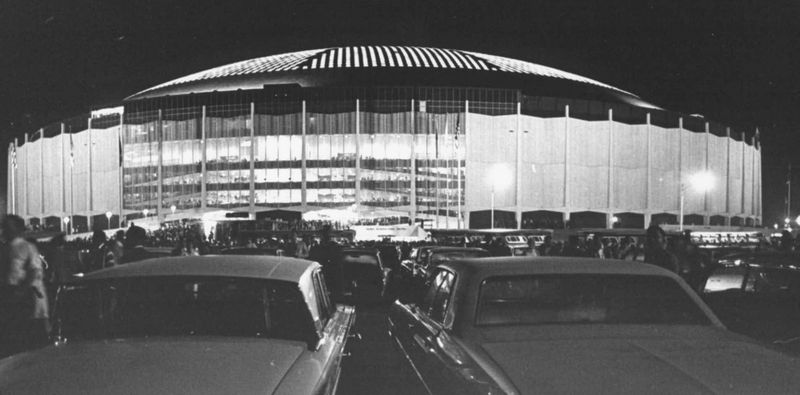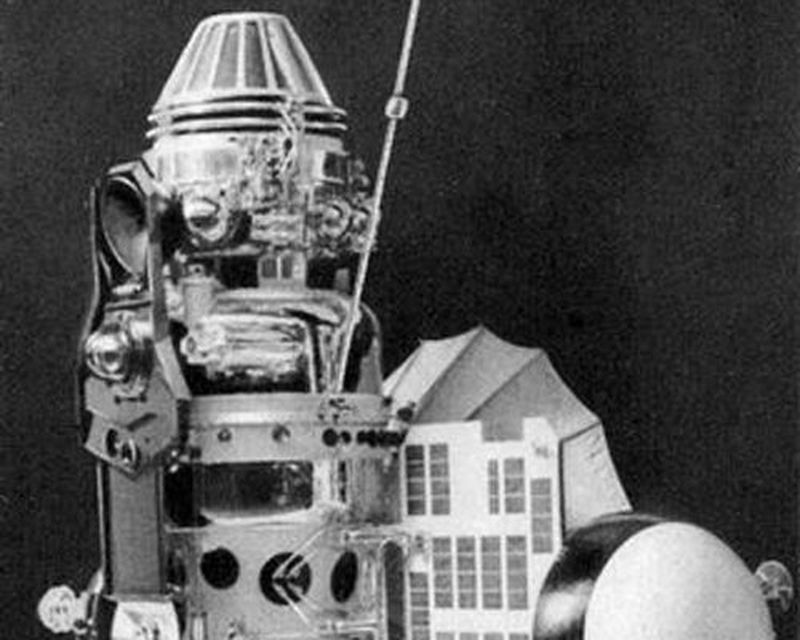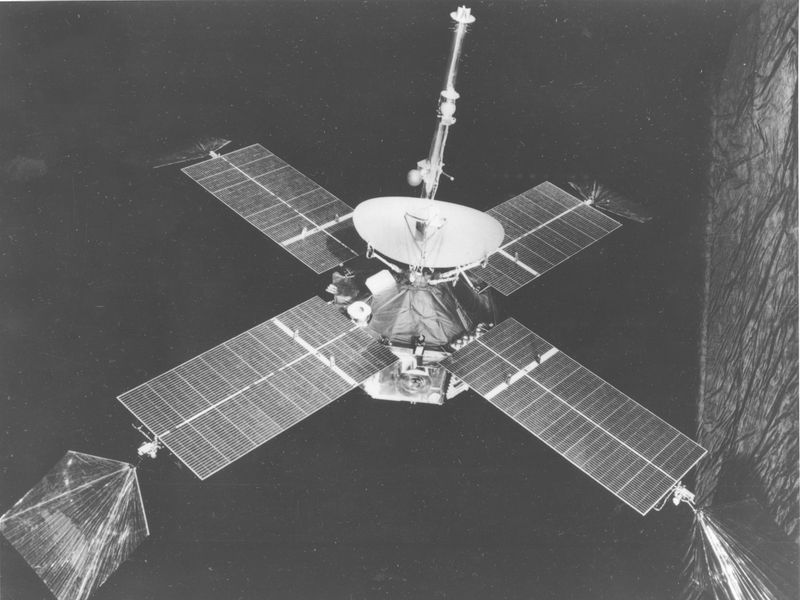In 1965, the world was a vibrant tapestry of cultural evolution, political change, and technological advancement. This era was marked by a dynamic shift in societal norms and global relations.
From the bustling streets of New York to the tranquil landscapes of rural Asia, 1965 offered a unique snapshot of a world in transition.
Through these 27 images, we will journey back to a time of iconic fashion, groundbreaking music, and pivotal historical events, capturing the essence of life in this transformative year.
Each image tells its own story, reflecting the diverse experiences of people around the globe.
1. The Beatles Perform at Shea Stadium
In 1965, The Beatles performed at Shea Stadium, marking one of the most significant concerts in music history. The event drew a record-breaking crowd, showcasing the band’s immense popularity.
Fans screamed and sang along, as the iconic tunes echoed through the stadium. This performance was a pivotal moment in the world of live music, setting new standards for future concerts.
The energy and excitement of the audience highlighted the cultural impact of The Beatles during this era. Their influence on music and pop culture continues to resonate, even decades later.
2. Martin Luther King Jr. Marches in Selma
In 1965, Martin Luther King Jr. led a historic march in Selma, Alabama, advocating for civil rights. This march was a defining moment in the struggle for racial equality in the United States.
The peaceful protestors faced significant opposition but remained steadfast in their pursuit of justice. King’s leadership and eloquence inspired many to join the movement.
The march highlighted the urgent need for voting rights legislation, eventually leading to the passage of the Voting Rights Act. This pivotal event left a lasting legacy on the fight for equality.
3. Gemini 4 Space Mission
The Gemini 4 mission in 1965 marked a significant achievement for NASA and the United States. Astronaut Edward H. White made history by performing the first American spacewalk.
This mission demonstrated the advancing capabilities of the U.S. space program during the Cold War era. White’s bravery and skill captivated audiences worldwide, showcasing human ingenuity and exploration.
The success of Gemini 4 paved the way for future manned space missions, contributing to the eventual moon landing. This mission remains a testament to the spirit of innovation.
4. Vietnam War Protests
In 1965, protests against the Vietnam War erupted across the United States, reflecting widespread discontent with the conflict. Young people, especially college students, played a crucial role in these demonstrations.
The protests were characterized by passionate speeches, marches, and creative expressions of dissent. This movement aimed to influence public opinion and government policy.
The activism of this era highlighted the power of youth engagement in political and social issues. These protests were instrumental in shaping the national conversation around the war.
5. Fashion of the Swinging Sixties
The fashion scene of 1965 was dominated by the vibrant and youthful styles of the Swinging Sixties. London, particularly Carnaby Street, became the epicenter of this fashion revolution.
Young people embraced bold colors, geometric patterns, and innovative designs, breaking away from traditional norms. This era saw the rise of influential designers who shaped contemporary fashion.
The clothing of the 1960s reflected the cultural and social changes of the time, symbolizing freedom and individuality. This fashion legacy continues to inspire designers and fashion enthusiasts today.
6. Launch of Gemini 6 and Gemini 7
In December 1965, NASA achieved the first successful space rendezvous with the Gemini 6 and Gemini 7 missions. This milestone was a crucial step in advancing space exploration.
The missions demonstrated the ability to maneuver and dock spacecraft, essential for future lunar missions. The crews worked tirelessly to ensure the success of this complex operation.
This achievement showcased the growing expertise and ambition of the U.S. space program. The Gemini missions laid the groundwork for the Apollo program, which would eventually lead to moon landings.
7. Cassius Clay vs. Sonny Liston Rematch
In May 1965, the highly anticipated boxing rematch between Cassius Clay, who would later be known as Muhammad Ali, and Sonny Liston took place.
The fight was held in the small town of Lewiston, Maine, and became famous for its controversial ending. Clay knocked out Liston in the first round with what many called “the phantom punch.”
The event was a major spectacle, drawing a modest crowd but significant media attention.
Photographers captured the moment Clay stood over Liston, taunting him to get up, a scene that became one of the most iconic images in sports history. Ali’s victory solidified his status as a boxing legend.
This rematch wasn’t just about boxing; it was a cultural moment that highlighted the changing dynamics of sports, race, and media in America. Ali’s persona and his stance on various social issues made him a larger-than-life figure, transcending the sport he dominated.
8. Opening of the Gateway Arch
The Gateway Arch in St. Louis, Missouri, was completed in 1965, becoming an iconic symbol of the city. This architectural marvel stands as the tallest man-made monument in the United States.
Designed by architect Eero Saarinen, the Arch celebrates the westward expansion of the United States. It serves as a testament to human creativity and engineering.
Visitors from around the world come to see this stunning structure, which offers breathtaking views of the city. The Gateway Arch remains a cherished landmark and a symbol of American ingenuity.
9. Black Panther Party Founded
In 1965, the Black Panther Party was founded by Huey P. Newton and Bobby Seale in Oakland, California. This organization aimed to address issues of racial inequality and police brutality.
The Panthers advocated for self-defense and community empowerment, gaining attention through their bold actions and rhetoric. They also implemented social programs to support marginalized communities.
The Black Panther Party’s influence on the civil rights movement and American society was profound. Their legacy continues to inspire activism and discussions on race and justice.
10. Bob Dylan Goes Electric
In 1965, Bob Dylan’s performance at the Newport Folk Festival marked a pivotal moment in music history. Known for his acoustic folk style, Dylan shocked audiences by playing an electric guitar.
This bold move signaled a shift in his musical direction and sparked conversations about tradition versus innovation. The crowd’s reaction was mixed, with some embracing the change and others resisting it.
Dylan’s decision to go electric influenced the evolution of rock music and inspired generations of musicians. His willingness to challenge norms remains a defining aspect of his legacy.
11. First Super Bowl Announced
In 1965, the announcement of the first Super Bowl marked the beginning of a new era in American sports. The game was set to feature the best teams from the AFL and NFL.
This event captured the nation’s attention, promising exciting competition and entertainment. The Super Bowl would go on to become a cultural phenomenon, attracting millions of viewers annually.
The inaugural game laid the foundation for a beloved tradition, uniting fans across the country. The anticipation and excitement surrounding the announcement reflected the growing popularity of American football.
12. Cultural Revolution Begins in China
The Cultural Revolution in China began in 1965, initiated by Chairman Mao Zedong. This movement aimed to preserve communist ideology by purging remnants of capitalist and traditional elements.
The Red Guards, primarily composed of young people, played a central role in this upheaval. They targeted intellectuals and cultural artifacts, leading to widespread chaos.
The Cultural Revolution had a profound and lasting impact on Chinese society, affecting millions of lives. This period remains a subject of extensive study and debate, highlighting the complexities of political power and ideology.
13. Miniskirt Fashion Trend
The miniskirt became a fashion sensation in 1965, symbolizing youthful rebellion and freedom. Designed by Mary Quant, this bold and daring style challenged conservative norms.
The miniskirt’s popularity quickly spread across the globe, becoming a staple of the Swinging Sixties. It was embraced by young women who sought to express individuality and empowerment.
This fashion trend reflected broader cultural shifts, as society began to redefine traditional gender roles. The miniskirt remains an enduring symbol of the 1960s and its revolutionary spirit.
14. Winston Churchill’s Funeral
In 1965, the world bid farewell to one of history’s most iconic leaders, Winston Churchill. His funeral was a momentous occasion, drawing dignitaries and mourners from around the globe.
The procession through London was marked by solemnity and respect, as people paid tribute to Churchill’s leadership during World War II. His legacy as a statesman and orator was celebrated.
Churchill’s funeral was not only a reflection on his life but also a moment of unity for the nation. His contributions to history continue to be remembered and honored.
15. The Sound of Music Premieres
The premiere of ‘The Sound of Music’ in 1965 captivated audiences with its enchanting story and memorable music. This film, starring Julie Andrews, became an instant classic.
Set against the backdrop of the Austrian Alps, the story of the Von Trapp family resonated with viewers of all ages. The songs, such as “Do-Re-Mi” and “My Favorite Things,” became cultural touchstones.
‘ The Sound of Music’s’ success highlighted the power of cinema to transport and inspire. Its enduring popularity continues to bring joy to audiences worldwide.
16. Voting Rights Act Passed
The passage of the Voting Rights Act in 1965 was a pivotal moment in American history. This legislation aimed to eliminate racial discrimination in voting, ensuring equal access to the ballot box.
The Act addressed longstanding injustices faced by African Americans, particularly in the South. It was a triumph for the civil rights movement, resulting from years of advocacy and struggle.
The Voting Rights Act strengthened democracy and empowered marginalized communities. Its impact extended beyond the United States, inspiring global movements for equality and justice.
17. Biafran War Begins
The Biafran War, also known as the Nigerian Civil War, began in 1965, igniting a conflict that would last until 1970. This war was rooted in ethnic tensions and political strife within Nigeria.
The struggle between the Nigerian government and the secessionist state of Biafra resulted in significant human suffering and displacement. International attention was drawn to the humanitarian crisis.
The Biafran War underscored the complexities of post-colonial nation-building in Africa. It highlighted the need for reconciliation and unity amidst diversity. The legacy of this conflict continues to inform discussions on peace and governance.
18. Launch of Intelsat I
In 1965, the launch of Intelsat I, also known as the “Early Bird,” marked a revolution in global communications. This satellite was the first to provide commercial communications services across the Atlantic.
Intelsat I enabled live broadcasts and telephone transmissions, bridging continents and transforming international communication. The satellite’s success demonstrated the potential for satellite technology to connect the world.
The launch of Intelsat I set the stage for future advancements in telecommunications, paving the way for the interconnected world we live in today. Its impact on global communication is immeasurable.
19. Cigarette Advertising on Television Restricted
In 1965, the Federal Communications Commission (FCC) in the United States took significant steps to restrict cigarette advertising on television. This move was part of a broader effort to address public health concerns.
Cigarette advertisements had been a staple of television, but growing evidence of health risks prompted regulatory action. The restrictions marked a shift in public perception and policy regarding smoking.
This decision by the FCC was a precursor to more comprehensive tobacco control measures. It played a role in raising awareness about the dangers of smoking, contributing to changes in societal attitudes.
20. Malcolm X Assassinated
The assassination of Malcolm X in 1965 was a tragic moment in American history. A prominent civil rights leader, Malcolm X was known for his powerful advocacy and eloquence.
His death sent shockwaves through the civil rights movement and led to a period of mourning and reflection. Malcolm X’s ideas and speeches had a lasting impact on discussions about race and justice.
The loss of such a dynamic and influential figure was deeply felt. His legacy continues to inspire activism and dialogue on equality and human rights around the world.
21. International Cooperation on Space Exploration
In 1965, amidst the tensions of the Cold War, the USA and USSR took steps toward cooperation in space exploration. This collaboration marked a significant shift in international relations.
While competition in space had been fierce, both nations recognized the potential benefits of working together. This cooperation laid the groundwork for future joint missions and research initiatives.
The spirit of collaboration in space exploration demonstrated the possibility of transcending political differences for the greater good. These efforts have continued to foster international partnerships in science and technology.
22. Rise of Pop Art Movement
The pop art movement gained significant momentum in 1965, characterized by its bold colors and incorporation of popular culture imagery. Artists like Andy Warhol and Roy Lichtenstein became leading figures.
Pop art challenged traditional ideas of art by using everyday objects and mass media as subjects. This movement reflected the consumer culture and societal changes of the time.
The rise of pop art had a lasting impact on the art world, influencing contemporary art and design. Its vibrant and accessible style continues to resonate with audiences worldwide.
23. Independence of The Gambia
In 1965, The Gambia gained independence from British colonial rule, becoming a sovereign nation. This momentous occasion was celebrated with joy and pride across the country.
The path to independence was marked by negotiations and peaceful transitions, setting an example for other nations. The Gambia’s journey to sovereignty highlighted the broader decolonization movement in Africa.
The celebrations of independence were a reflection of national identity and hope for the future. The Gambia’s peaceful transition remains a significant chapter in its history, inspiring continued progress and development.
24. The Opening of the Astrodome
The Astrodome, completed in 1965, was hailed as the “Eighth Wonder of the World.” Located in Houston, Texas, it was the first multi-purpose, domed sports stadium.
This architectural innovation featured a retractable roof and air conditioning, providing a comfortable environment for events. The Astrodome hosted a variety of sports and entertainment activities.
Its groundbreaking design set new standards for stadium construction worldwide. The Astrodome’s legacy as a pioneering structure in sports architecture continues to influence modern stadium designs.
25. Launch of Venera 3
The Venera 3 mission, launched by the Soviet Union in 1965, was a landmark in space exploration. It was the first spacecraft to reach the surface of another planet, Venus.
Although communication was lost before landing, Venera 3’s journey marked a significant achievement in the exploration of our solar system. This mission demonstrated the Soviet Union’s commitment to space research.
The Venera program laid the foundation for future missions to Venus and other planets. It highlighted the challenges and possibilities of exploring the mysteries of outer space.
26. First Heart Transplant Performed
In 1965, Dr. Christiaan Barnard performed the first successful heart transplant, marking a breakthrough in medical science. This operation opened new possibilities for treating heart disease.
The pioneering surgery faced numerous challenges, but its success provided hope for patients worldwide. It spurred advancements in transplant techniques and post-operative care.
The first heart transplant was a milestone in medicine, showcasing the potential of surgical innovation. It paved the way for future developments in organ transplantation, improving countless lives.
27. Launch of the Mariner 4
NASA’s Mariner 4 mission in 1965 was a groundbreaking achievement in space exploration. It was the first spacecraft to successfully fly by Mars and send back close-up images.
These images provided valuable insights into the Martian surface, sparking interest and curiosity about the red planet. The success of Mariner 4 demonstrated the feasibility of robotic exploration.
This mission paved the way for future missions to Mars, contributing to our understanding of the planet. Its legacy continues to inspire scientific inquiry and exploration of our solar system.
